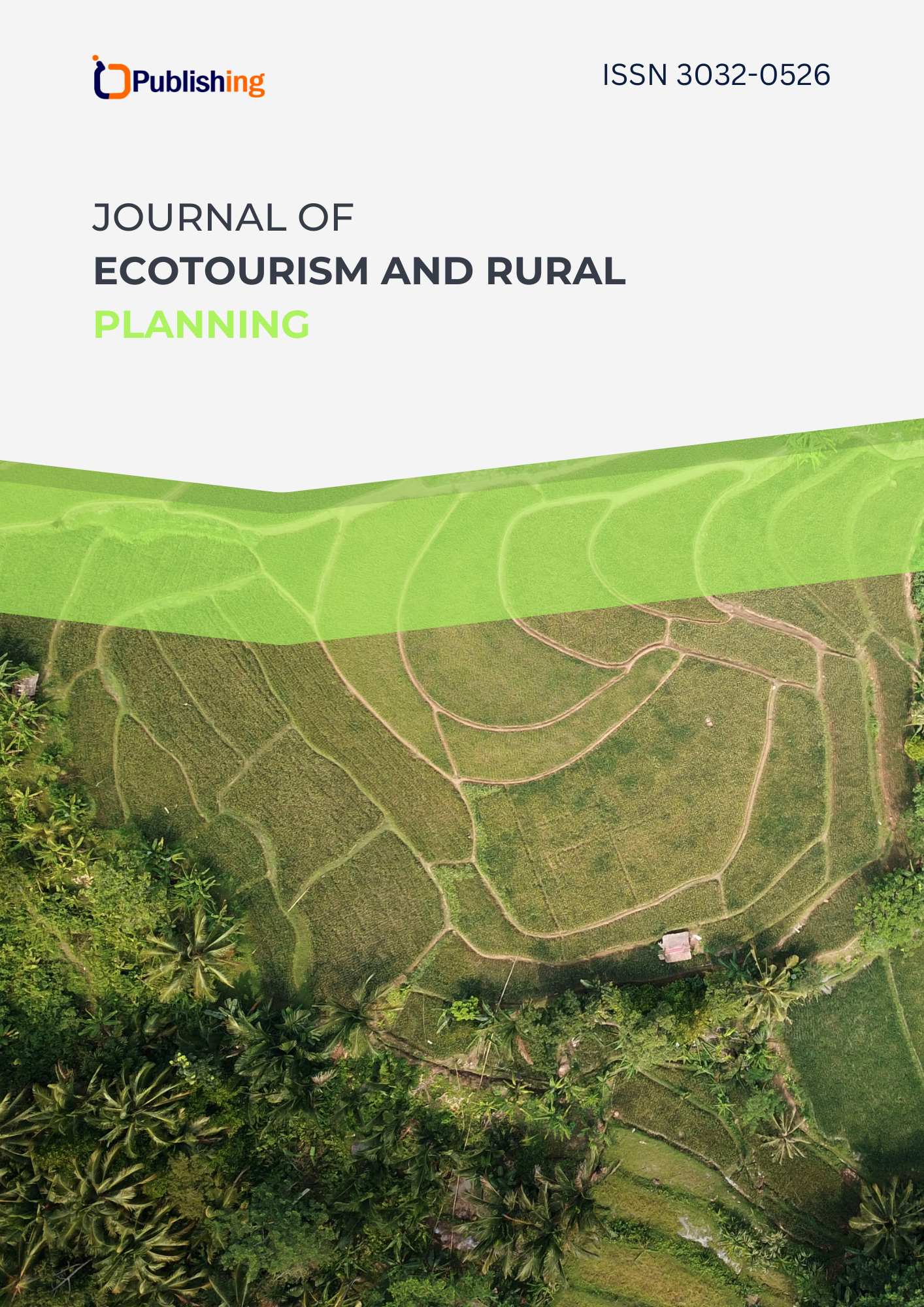Pengaruh Employee Engagement Terhadap Burnout dengan Happiness at Work Sebagai Variabel Moderasi (Studi Pada Karyawan Perhutani Purwodadi)
DOI:
https://doi.org/10.47134/jerp.v1i1.116Keywords:
Employee engagement, Burnout, Happiness at WorkAbstract
Penelitian ini bertujuan untuk menguji dan menganalisis pengaruh employee engagement terhadap burnout dengan dimoderasi happiness at work studi pada karyawan Perum Perhutani Purwodadi. Jenis penelitian ini adalah penelitian kuantitatif dengan menggunakan data primer yang diperoleh dengan melakukan penyebaran kuesioner dengan google form. Dalam penelitian ini jumlah responden sebanyak 102 karyawan yang sudah memenuhi kriteria dengan menggunakan metode purposive sampling. Penelitian ini menurunkan 2 hipoteis dengan pengolahan data melalui program SPSS 25 dan uji MRA untuk menguji variabel moderasi. Penelitian ini memberikan hasil bahwa employee engagement berpengaruh positif dan signifikan terhadap burnout dan dimediasi happiness at work menghasilkan negative dan signifikan.
This study aims to examine and analyze the effect of employee engagement on burnout with moderated happiness at work studies on Perum Perhutani Purwodadi employees. This type of research is quantitative research using primary data obtained by distributing questionnaires with google form. In this study, the number of respondents was 102 employees who met the criteria using purposive sampling method. This study derived 2 hypotheses with data processing through the SPSS 25program and MRA test to test moderation variables. This study provides results that employee engagement has a positive and significant effect on burnout and mediated happiness at work produces negative and significant.
References
Bakker, A. B., & Demerouti, E. (2008). Towards a model of work engagement. Career Development International, 13(3), 209–223. https://doi.org/10.1108/13620430810870476
Bakker, A. B., & Oerlemans, W. G. M. (2016). Momentary Work Happiness as a Function of Enduring Burnout and Work Engagement. Journal of Psychology: Interdisciplinary and Applied, 150(6), 755–778. https://doi.org/10.1080/00223980.2016.1182888
Bakker, A., Demerouti, E., & Schaufeli, W. (2003). Dual processes at work in a call centre: An application of the job demands – resources model. European Journal of Work and Organizational Psychology, 12(4), 393 – 417. https://doi.org/10.1080/13594320344000165
Chandni, S., & Rahman, Z. (2020). Customer engagement and employee engagement: systematic review and future directions. Service Industries Journal, 40(13–14), 932–959. https://doi.org/10.1080/02642069.2020.1733534
Cohen, A. (2007). Commitment before and after: An evaluation and reconceptualization of organizational commitment. Human Resource Management Review, 17(3), 336–354. https://doi.org/10.1016/j.hrmr.2007.05.001
Cotel, A., Golu, F., Stoian, A. P., Dimitriu, M., Socea, B., Cirstoveanu, C., Davitoiu, A. M., Alexe, F. J., & Oprea, B. (2021). Predictors of burnout in healthcare workers during the covid-19 pandemic. Healthcare (Switzerland), 9(3), 1–8. https://doi.org/10.3390/healthcare9030304
Das, M., & Ghosh, S. K. (2020). Summary and future research. Studies in Computational Intelligence, 858, 137–142. https://doi.org/10.1007/978-3-030-27749-9_9
Daud, N., Abdul Rahim, A. F., Mat Pa, M. N., Ahmad, A., Yusof, N. A., Hassan, N. M., & Idris, N. A. (2022). Emotional Intelligence Among Medical Students and Its Relationship with Burnout. Education in Medicine Journal, 14(3), 49–59. https://doi.org/10.21315/eimj2022.14.3.4
Diener, E., & Kesebir, P. (2016). Happiness : Its Antecedents and Consequences Happiness 1 Running Head : INDIVIDUAL DIFFERENCES IN HAPPINESS Happiness Ed Diener University of Illinois and the Gallup Organization Pelin Kesebir University of Illinois at Urbana-Champaign William Tov Univers. April.
Dillon, C. M., & Carr, J. E. (2007). Assessing indices of happiness and unhappiness in individuals with developmental disabilities: A review. Behavioral Interventions, 22(3), 229–244. https://doi.org/10.1002/bin.240
Farber, B. A. (2000). Treatment strategies for different types of teacher burnout. Journal of Clinical Psychology, 56(5), 675–689. https://doi.org/10.1002/(SICI)1097-4679(200005)56:5<675::AID-JCLP8>3.0.CO;2-D
Federman, B. (2010). Reengaging the workforce during tough times. Employment Relations Today, 37(1), 27–34. https://doi.org/10.1002/ert.20282
Fisher, C. D. (2010). Happiness at Work. International Journal of Management Reviews, 12(4), 384–412. https://doi.org/10.1111/j.1468-2370.2009.00270.x
Fulaedzah, I. A., Tjahjono, H. K., & Rahayu DA, M. K. P. (2022). Employee Engagement Mediating Self Efficacy and Quality of Work Life on Contact Center’s Burnout. Interdisciplinary Social Studies, 1(7), 881–895. https://doi.org/10.55324/iss.v1i7.171
Ghozali, I. (2018). Aplikasi analisis multivariate dengan program IBM SPSS 25 edisi ke-9. http://slims.umn.ac.id//index.php?p=show_detail&id=19545
Kahn, W. A. (1990). Psychological conditions of personal engagement and disengagement at work. Academy of Management Journal, 33(4), 692–724. https://doi.org/10.5465/256287
Kristensen, T. S., Borritz, M., Villadsen, E., & Christensen, K. B. (2005). The Copenhagen Burnout Inventory: A new tool for the assessment of burnout. Work and Stress, 19(3), 192–207. https://doi.org/10.1080/02678370500297720
Rizal, R., & Fipiariny, S. (2022). Pengaruh employee engagement dan work life balance terhadap burnout pada pekerja di bidang kesehatan kota Palembang. Jurnal Adminika, 8(1), 1–14. http://poltekanika.ac.id/journal/index.php/adm/article/download/304/260
Rotter, J. B. (1966). Generalize D Expectancie S for Interna L Versus. 80(1). https://doi.org/10.1037/h0092976
Santhanam, N., & Srinivas, S. (2020). Modeling the impact of employee engagement and happiness on burnout and turnover intention among blue-collar workers at a manufacturing company. Benchmarking: An International Journal, 27(2), 499–516. https://doi.org/10.1108/BIJ-01-2019-0007
schaufeli et al., 2004. (2017). Penyusunan dan Pengembangan Alat Ukur Employee Engagement. Psikohumaniora: Jurnal Penelitian Psikologi, 1(1), 113. https://doi.org/10.21580/pjpp.v1i1.958
Sekaran & Bougie. (2016). Research Methods For Business : A Skill-Building Approach Uma Sekaran , Roger Bougie - download pdf free CLICK HERE TO DOWNLOAD. Sekaran Dan Bougie.
Singh, S., & Aggarwal, Y. (2018). Happiness at Work Scale: Construction and Psychometric Validation of a Measure Using Mixed Method Approach. Journal of Happiness Studies, 19(5), 1439–1463. https://doi.org/10.1007/s10902-017-9882-x
Tampubolon, R. R., & Siagian, V. (2020). Pengaruh profitabilitas, solvabilitas, likuiditas dan audit tenure terhadap audit report lag dengan komite sebagai pemoderasi. Jurnal Ekonomi Modernisasi, 16(2), 82–95. https://doi.org/10.21067/jem.v16i2.4954
Wardani, L. M. I., & Firmansyah, R. (2019). The Work-Life Balance Of Blue-Collar Workers: The Role Of Employee Engagement And Burnout. Jurnal Psikologi Ulayat. https://doi.org/10.24854/jpu02019-238
Downloads
Published
How to Cite
Issue
Section
License
Copyright (c) 2024 Annisa Puspita Apricilia, Rini Juni Astuti

This work is licensed under a Creative Commons Attribution 4.0 International License.








